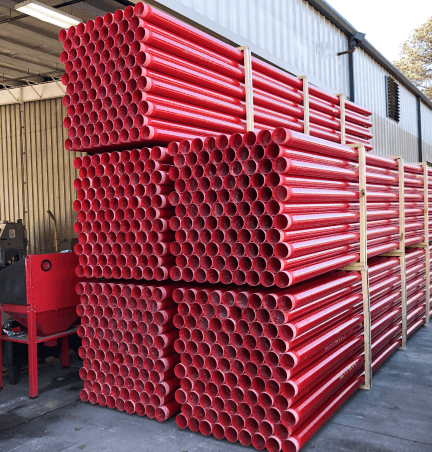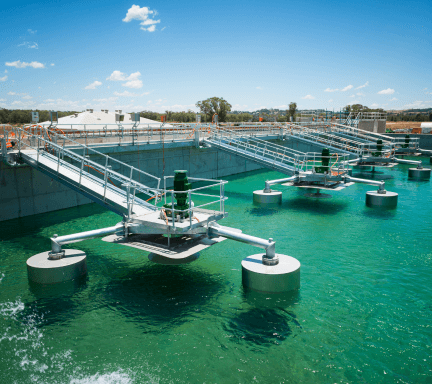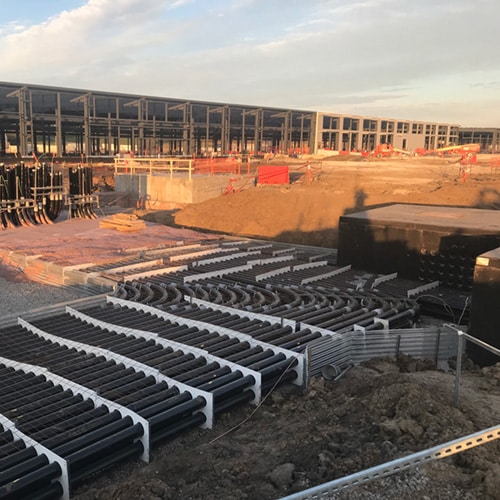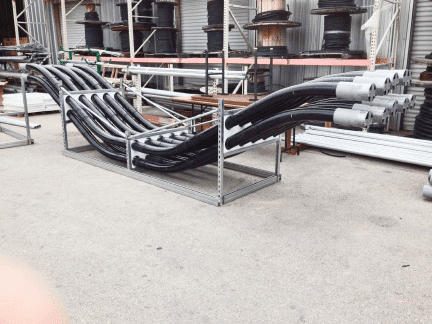Six of the 10 most destructive fires in California were started by electrical equipment, according to CNBC. Recent fires in California have elevated the situation, and the utility company is mandating 10 years of intermittent blackouts across the state.
Ten years of erratic blackouts will have disastrous effects on business and the state’s economy, not to mention dangerous implications to public health and safety within the healthcare system and infrastructure like traffic. Californians will be forced to navigate daily tasks without power. With taxpayers also on the hook for billions of dollars of wildfire damage, there’s a better, safer solution utilizing buried fiberglass conduit.
To keep customers safe from wildfires and free from disruption, California utility companies should bury high voltage cable in high risk areas such as canyons and densely populated areas susceptible to fire.
Encasing high voltage transmission lines underground in Champion Fiberglass conduit will minimize disruptions to the economy and public health and safety, as well as the daily headaches and inconveniences blackouts would cause Californians.
Direct buried fiberglass conduit is the obvious solution to this serious public safety and economic issue. PVC conduit and steel conduit are not suitable for high-voltage cable installations. Here’s why:
- Fiberglass conduit with wall thickness of .25” can carry high voltage transmission lines of 125KV and higher with a thicker wall custom solution
- Fiberglass conduit will not melt like PVC conduit nor weld to the side like steel conduit under cable faults. The damaged cable can easily be pulled out and new cable can be installed without removing the fiberglass conduit.
- The lower coefficient of friction for fiberglass conduit allows for much longer pulls and a longer distance between pull boxes/vaults in contrast to PVC conduit and steel conduit.
A safe solution for underground utility environments, fiberglass conduit offers:
- Dielectric Strength – Champion Fiberglass conduit has a dielectric strength of 550 volts with our XW wall thickness of 250 ml and can carry transmission lines up to 125 KV (or more if wall thickness is increased).
- Low Coefficient of Friction – Consistently one of the lowest coefficient of friction numbers of any conduit system. This allows for far fewer pull boxes in long runs.
- Not Affected by Cable Faults – Will not melt like PVC conduit or weld to the side like steel conduit.
- Rodent, Insect and Pest Resistant – Protects against the physical attacks of rodents, insects and other pests.
- UL Listed – UL 2515 and 2515A for above ground and UL 2420 for below ground.
- UV Stable – Maintains mechanical/physical properties when exposed to the damaging UV sunlight.
- Light Weight – Comparison of 4” conduit types:
- XW Fiberglass – 2.38 lbs. per foot
- Galvanized Rigid Steel – 10.0 lbs. per foot
- PVC coated Steel – 10.3 lbs. per foot
- Cost Effective – Material and labor cost much lower than traditional conduit systems.












